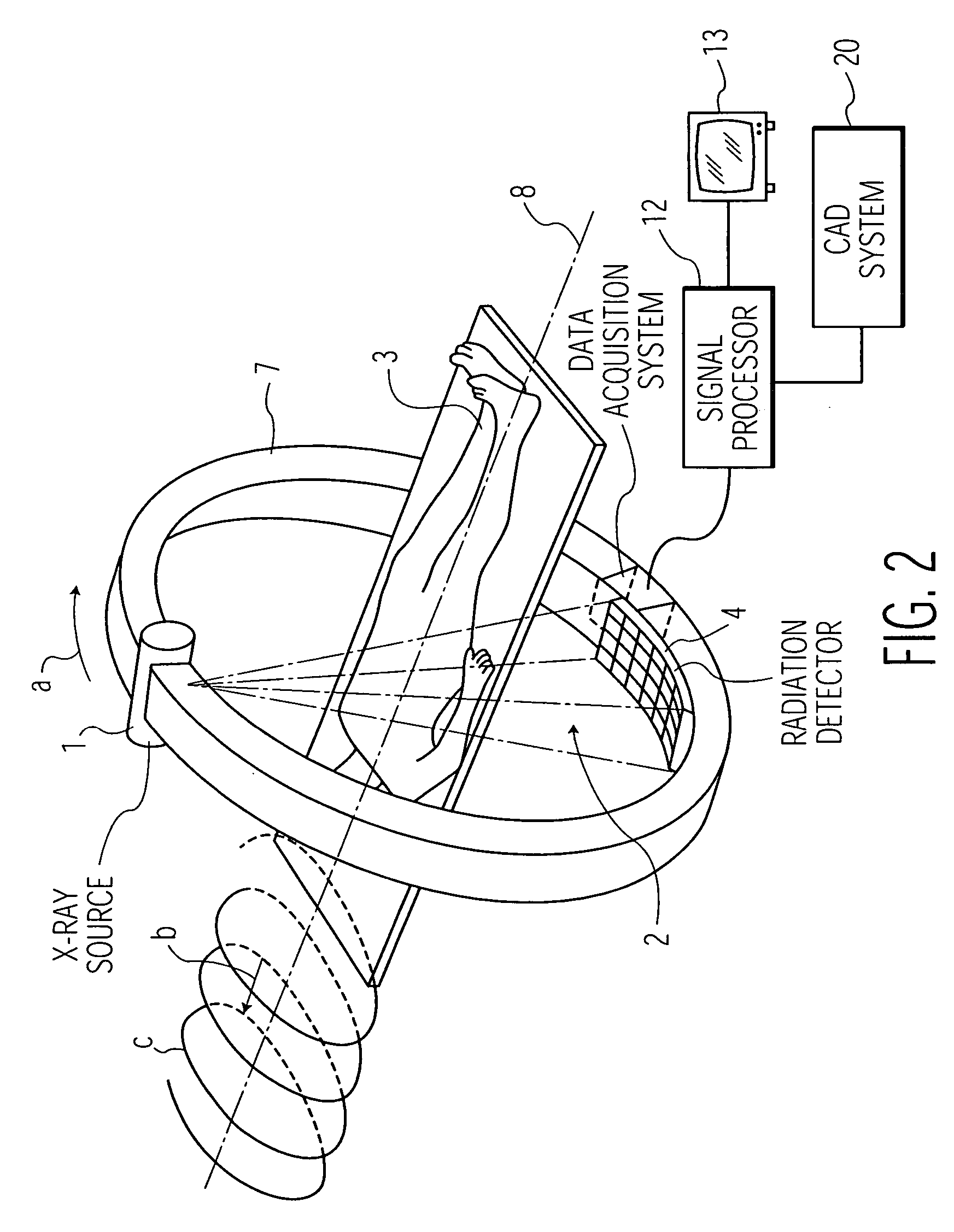System and method for using learned discriminative models to segment three dimensional colon image data
a three-dimensional colon image and discriminative model technology, applied in image enhancement, image analysis, instruments, etc., can solve the problems of difficult to distinguish colon walls from colon walls, small polyps of interest, and difficult task of automatic segmentation
- Summary
- Abstract
- Description
- Claims
- Application Information
AI Technical Summary
Benefits of technology
Problems solved by technology
Method used
Image
Examples
Embodiment Construction
[0020]The present invention is directed to a system and method for using learned discriminative models to detect the appearance of complex foreground and background in an image using a probabilistic boosting tree and boundary evolution. Such a method is particularly effective in the segmentation and delineation of a colon border in 3D colon image data. In accordance with one embodiment of the present invention, residual material (e.g., stool) is segmented from the colon wall by tagging the residual material. The tagged residual material is given a high intensity so that it shows up as bright areas in the image. A learning based method is then used to determine the presence of the colon border.
[0021]Such image data can be obtained using different imaging modalities such as Computed Tomography (CT), X-ray or Magnetic Resonance Imaging (MRI). FIG. 1 illustrates a number of views of a colon. The first image 102 shows a complete CT volume of a section of a colon. There are two types of o...
PUM
 Login to View More
Login to View More Abstract
Description
Claims
Application Information
 Login to View More
Login to View More - R&D
- Intellectual Property
- Life Sciences
- Materials
- Tech Scout
- Unparalleled Data Quality
- Higher Quality Content
- 60% Fewer Hallucinations
Browse by: Latest US Patents, China's latest patents, Technical Efficacy Thesaurus, Application Domain, Technology Topic, Popular Technical Reports.
© 2025 PatSnap. All rights reserved.Legal|Privacy policy|Modern Slavery Act Transparency Statement|Sitemap|About US| Contact US: help@patsnap.com



